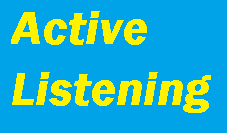Why do some learning and development initiatives flourish while others founder and fail? Why do some generate monstrous ROI while others are a waste of time and money? There can be many reasons, but a common one is executive endorsement and follow-through, or lack of it. The boss sets the tone and focuses energy on priorities. Training is one of those things that will get the attention it deserves or not based on leadership urgency.
At a recent conference, members of the Learning Dynamics team took part in conversations with training managers and other learning and development professionals from around the country. When the topic of conversation came around to obstacles to effective training, lack of leadership’s commitment was a too-common comment.
With that in mind, what can an organization do to not just eliminate executive roadblocks, but engage and energize the most senior managers to make training outcomes a top priority? Here are some ideas.
Get executive buy-in early. Senior leaders need to understand the need for training and what they can expect from the effort and expense. What is the ROI? Paint the picture of better financial and customer service results and anything else that is important to the organization.
Ask for support. Learning and development advocates must enlist support. A conversation starting with, “If this training investment is going to make sense, we will need your help with…” Fill in the blanks by asking for specific support on key messages and expectations of behavioral change.
Take a stand on outcomes. Do your learning and development advocates have skin in the game? Are they willing to commit to some level of performance improvement? If they don’t believe in it, the top people likely will not either.
Celebrate success along the way. If the training initiative is important, it deserves internal publicity. Recruit an executive champion (cheerleader, perhaps?) to give it the air time and attention it deserves. Celebrate incremental improvements that can be tied back to the L&D effort.
Document the effort. After your training program is complete and the results are in, recap the results. Prepare a concise executive summary to explain the outcomes of the training. Can you show causality from the training to the performance improvements? Take nothing for granted. Document it.
What ideas do you have to get executive endorsement? We would love to hear them. Share your ideas here.
===
Learning Dynamics can help your company create a comprehensive learning and development program that includes executive tools to reinforce the effort and improve its effectiveness. Contact us today for a free consultation.



